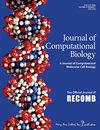A Cancer Subpopulation Competition Model Reveals Optimal Levels of Immune Response that Minimize Tumor Size.
IF 1.6
4区 生物学
Q4 BIOCHEMICAL RESEARCH METHODS
引用次数: 0
Abstract
Breast cancer is a complex disease with significant phenotypic heterogeneity of cells, even within a single breast tumor. Emerging evidence underscores the significance of intratumoral competition, which can serve as a key contributor to cancer drug resistance, imparting substantial clinical implications. Understanding the competitive dynamics is paramount as it can significantly influence disease progression and treatment outcomes. In the present work, a mathematical model was developed using a system of differential equations to describe the dynamic interactions between two cancer subtypes (each further classified into cancer stem cells and tumor cells) and innate immune cells. The purpose of the model is to comprehensively understand the competitive interactions between the heterogeneous subpopulations. The equilibrium points and stability analysis for each equilibrium point were established. Model simulations showed that the competition between two cancer subtypes directly affects the number of both species. When competition between two cancer subtypes is strong, increasing the immune response rate specific to the more competitive species effectively reduces the tumor size. However, if the competition is relatively weak, an optimal immune response rate is required to minimize the total number of tumor cells. Rates below the optimal level fail to reduce the population of the stronger species, whereas rates above the optimal level can lead to the recurrence of the weaker species. Overall, this model provides insights into breast cancer dynamics and guides the development of effective treatment strategies.癌症亚群竞争模型揭示了使肿瘤体积最小化的最佳免疫反应水平
乳腺癌是一种复杂的疾病,即使在单个乳腺肿瘤内,细胞也具有显著的表型异质性。新出现的证据强调了瘤内竞争的重要性,它是导致癌症耐药性的关键因素,具有重大的临床意义。了解竞争动态至关重要,因为它能极大地影响疾病的进展和治疗效果。本研究利用微分方程系统建立了一个数学模型,以描述两种癌症亚型(每种亚型又分为癌症干细胞和肿瘤细胞)与先天性免疫细胞之间的动态相互作用。该模型的目的是全面了解异质亚群之间的竞争性相互作用。模型建立了平衡点,并对每个平衡点进行了稳定性分析。模型模拟结果表明,两种癌症亚型之间的竞争直接影响两种亚型的数量。当两种癌症亚型之间的竞争较强时,提高竞争较强亚型的特异性免疫反应率可有效缩小肿瘤体积。但是,如果竞争相对较弱,则需要一个最佳的免疫反应率来最大限度地减少肿瘤细胞的总数。低于最佳水平的免疫反应率无法减少较强物种的数量,而高于最佳水平的免疫反应率则会导致较弱物种的复发。总之,该模型提供了对乳腺癌动态的深入了解,并为制定有效的治疗策略提供了指导。
本文章由计算机程序翻译,如有差异,请以英文原文为准。
求助全文
约1分钟内获得全文
求助全文
来源期刊

Journal of Computational Biology
生物-计算机:跨学科应用
CiteScore
3.60
自引率
5.90%
发文量
113
审稿时长
6-12 weeks
期刊介绍:
Journal of Computational Biology is the leading peer-reviewed journal in computational biology and bioinformatics, publishing in-depth statistical, mathematical, and computational analysis of methods, as well as their practical impact. Available only online, this is an essential journal for scientists and students who want to keep abreast of developments in bioinformatics.
Journal of Computational Biology coverage includes:
-Genomics
-Mathematical modeling and simulation
-Distributed and parallel biological computing
-Designing biological databases
-Pattern matching and pattern detection
-Linking disparate databases and data
-New tools for computational biology
-Relational and object-oriented database technology for bioinformatics
-Biological expert system design and use
-Reasoning by analogy, hypothesis formation, and testing by machine
-Management of biological databases
 求助内容:
求助内容: 应助结果提醒方式:
应助结果提醒方式:


